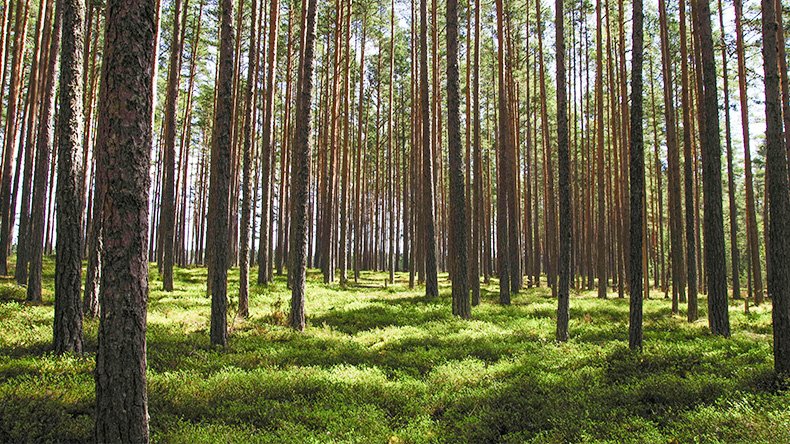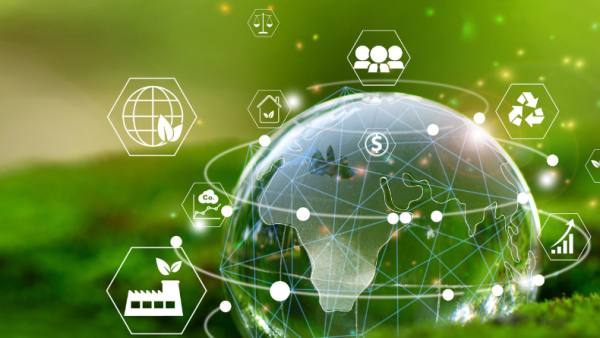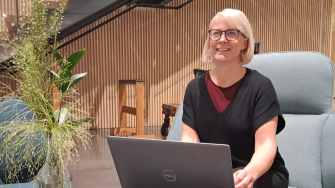Bioeconomy innovations can replace non-renewable raw materials – LAB Biofine aims to make South Karelia a hub for bioeconomy

In addition to sustainable raw materials, bioeconomy includes a circular economy perspective and the idea of fully utilizing raw materials. Therefore, bioeconomy innovations aim to make use of industrial side streams and various types of waste.
In South Karelia, the forest industry generates significant side streams. The region remains one of the world’s largest forest industry hubs. However, not all parts of the wood are utilized, resulting in substantial side streams, such as biomass that may yield valuable products through further refinement.
“Currently, forest industry side streams like bark, wood chips, and sawdust are burned for energy, which is then used within the industry. The resulting ash is used to fertilize forests, and LAB has conducted extensive research on ash utilization. Burning wood for energy is not entirely wasteful, but not very efficient either,” says Annakaisa Elo, Chief Specialist at LAB’s Faculty of Technology.
Wood is a bioeconomy treasure trove
From a bioeconomy perspective, every valuable component of wood should be utilized. Only the parts with no use should be burned, minimizing the amount of wood incinerated.
“For example, tree bark is a real treasure trove. Researchers can refine it into substances used in cosmetics, pharmaceuticals, and wood treatment,” Elo explains.
Wood also yields health-promoting substances like the Finnish invention xylitol, and cotton-like fibers for the textile industry. Other substances derived from forest industry side streams include lignin, used in batteries and as a fossil-free adhesive, and microcellulose, suitable as a filler in medicines and cosmetics. Additionally, the forest industry produces large amounts of biogenic carbon dioxide.
“Value chains and business opportunities related to carbon dioxide are being explored in the national Hiiliketju (Carbon Chain) project, in which LAB and LUT are also involved. In the future, carbon dioxide could become one of the forest industry’s main products alongside wood and pulp.”
Currently, Finnish food industry and concrete production uses biogenic carbon dioxide, but a large portion remains unused.
South Karelia offers an ideal setting for a bioeconomy competence center
LAB Biofine, a joint project of the LAB University of Applied Sciences and the LUT University, focuses on supporting new bioeconomy solutions. The project establishes research and innovation environment in Lappeenranta aimed at developing and scaling new bio-based products for industrial production. The project received two major funding grants in 2024.
South Karelia is ideal for bioeconomy research, development, and innovation) work due to its supportive industry and high-level expertise – both LAB and LUT are recognized players in the field. For example, the LUT boasts a world-class separation technology department. The LAB Biofine will also serve as a learning platform for future laboratory analysts, with undergraduate-level training starting at LAB in autumn 2026.
A cluster of bioeconomy companies is rapidly forming in the region. High-tech bioeconomy companies like Nordic Bioproducts Group, and Synbio Powerlabs are already operating there and involved in the LAB Biofine.
Additionally, the LUT spin-off Solar Foods has announced plans to build at least one factory in Lappeenranta to produce its Solein protein, utilizing carbon dioxide.
“Thanks to the local industry, bioeconomy raw materials are logistically close in South Karelia, making regional concentration worthwhile,” says Elo.
LAB Biofine helps companies cross the “Valley of Death”
LAB Biofine acts as a bridge between major forest industry players, bioeconomy startups and scaleups, and higher education in South Karelia. It provides a concrete platform for scaling innovations to production scale.
“The idea is to help companies cross the so-called ‘valley of death’,” says project director Mikko Ojapelto.
By “valley of death,” he refers to the phase where a company must prove its concept works on an industrial scale. The LAB Biofine pilot plant in Lappeenranta offers this opportunity without requiring companies to invest in their own full-scale facilities.
A functional ecosystem requires close collaboration
The demand for bioeconomy expertise is not just regional – it is global. Replacing fossil raw materials with renewables is a key part of the green transition. That is why Finland has a national bioeconomy strategy, which also aims to increase the economic significance of the sector.
Ojapelto emphasizes that Finland has the potential to be a global role model in bioeconomy. LAB Biofine, as a nationally unique project, could lead this development and put South Karelia’s bioeconomy expertise on the world map.
The key to success is effective collaboration. South Karelia has raw materials, strong intellectual capital, and innovative, growing businesses. LAB Biofine acts as the glue connecting these players.
“LAB Biofine is nothing on its own, nor is it meant to be. But when connected with other actors and centers of expertise, its regional impact on Lappeenranta and South Karelia could be enormous. At the same time, it helps build a new national export sector for Finland.”
Latest stories

LAB Biofine
LAB Biofine is our new innovation and development platform for the bioeconomy.

